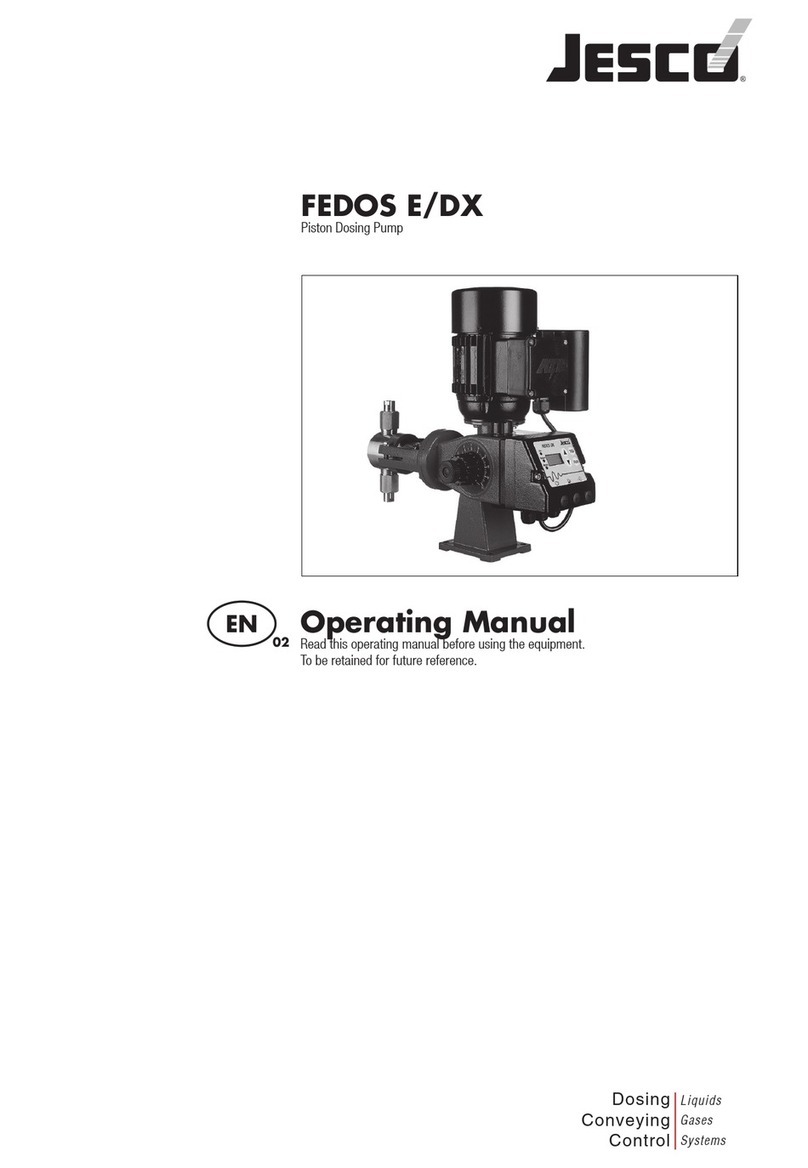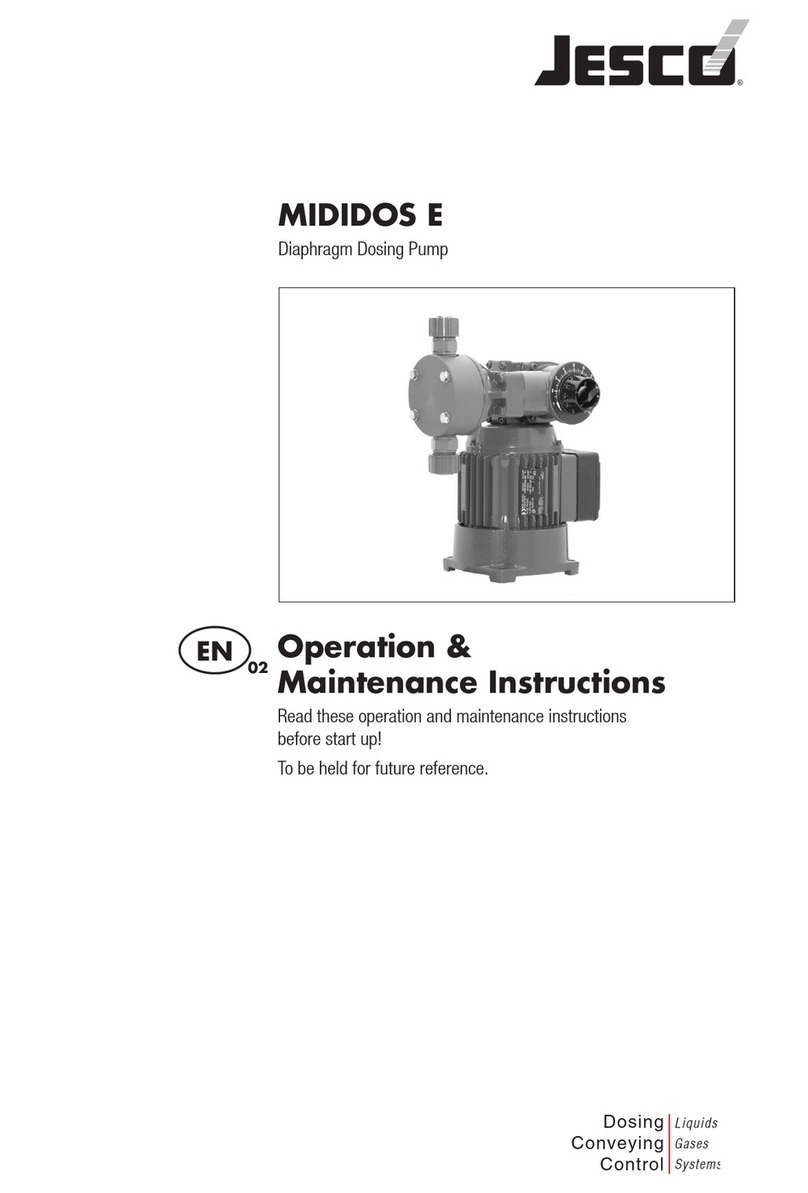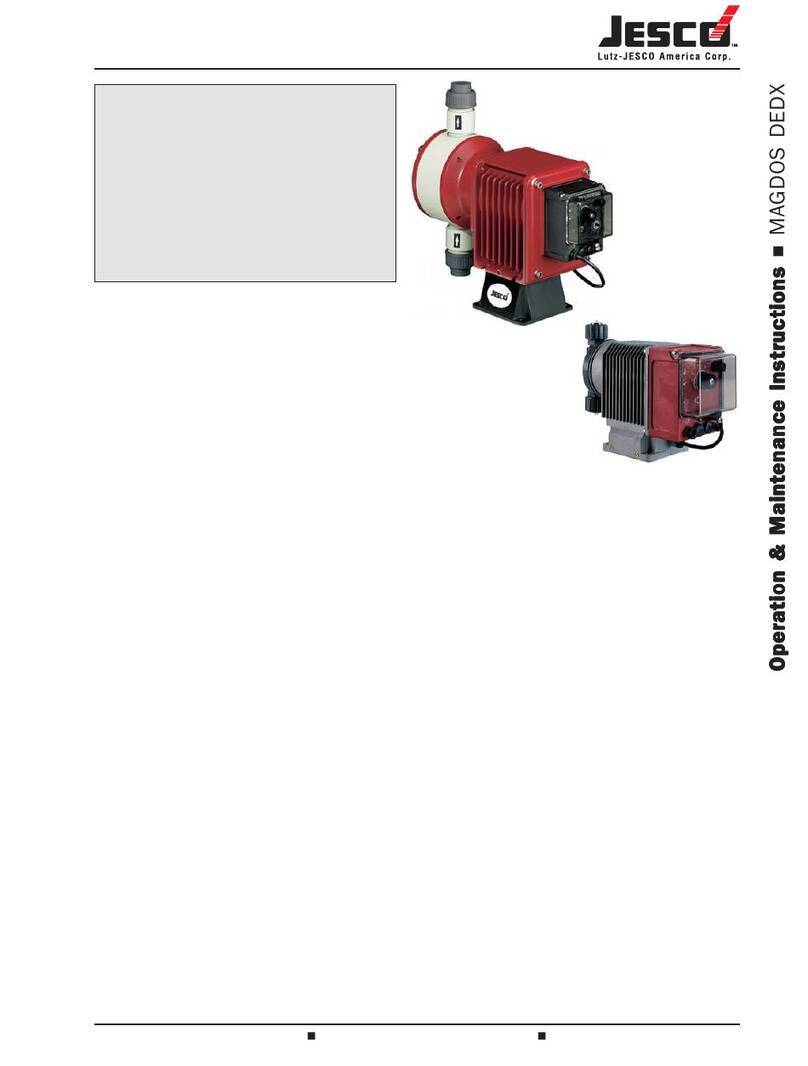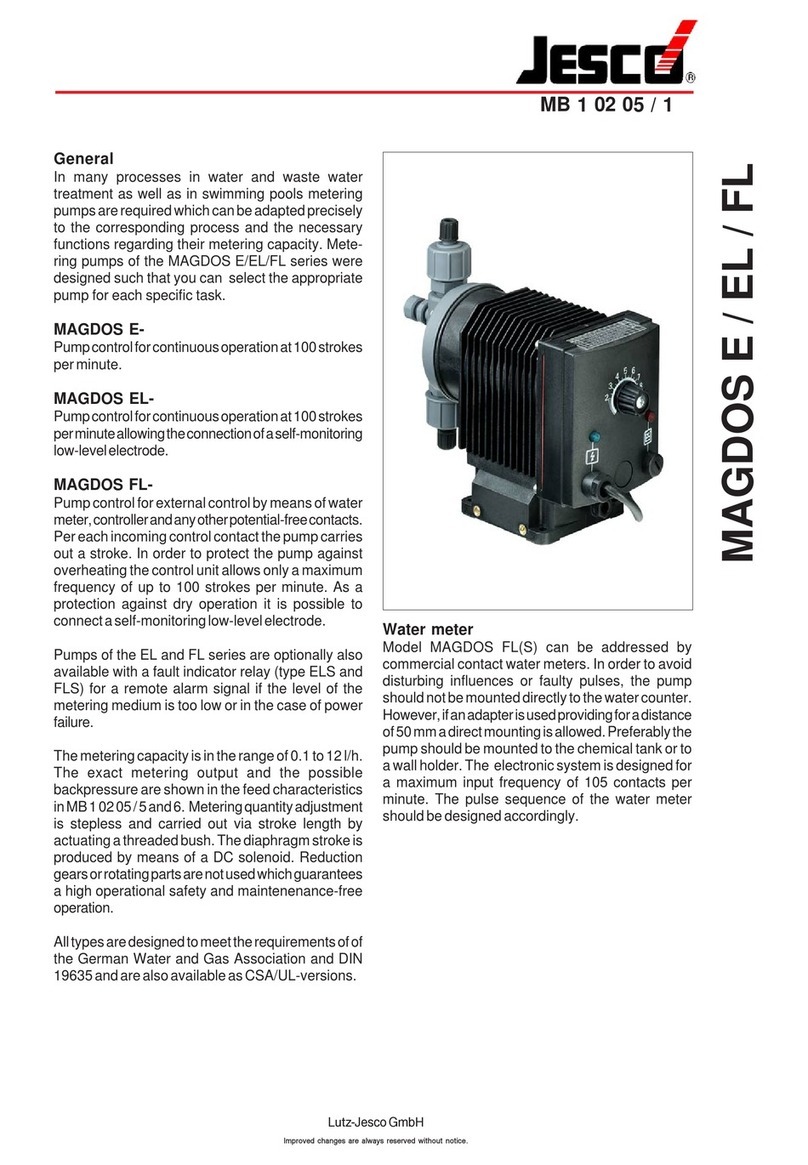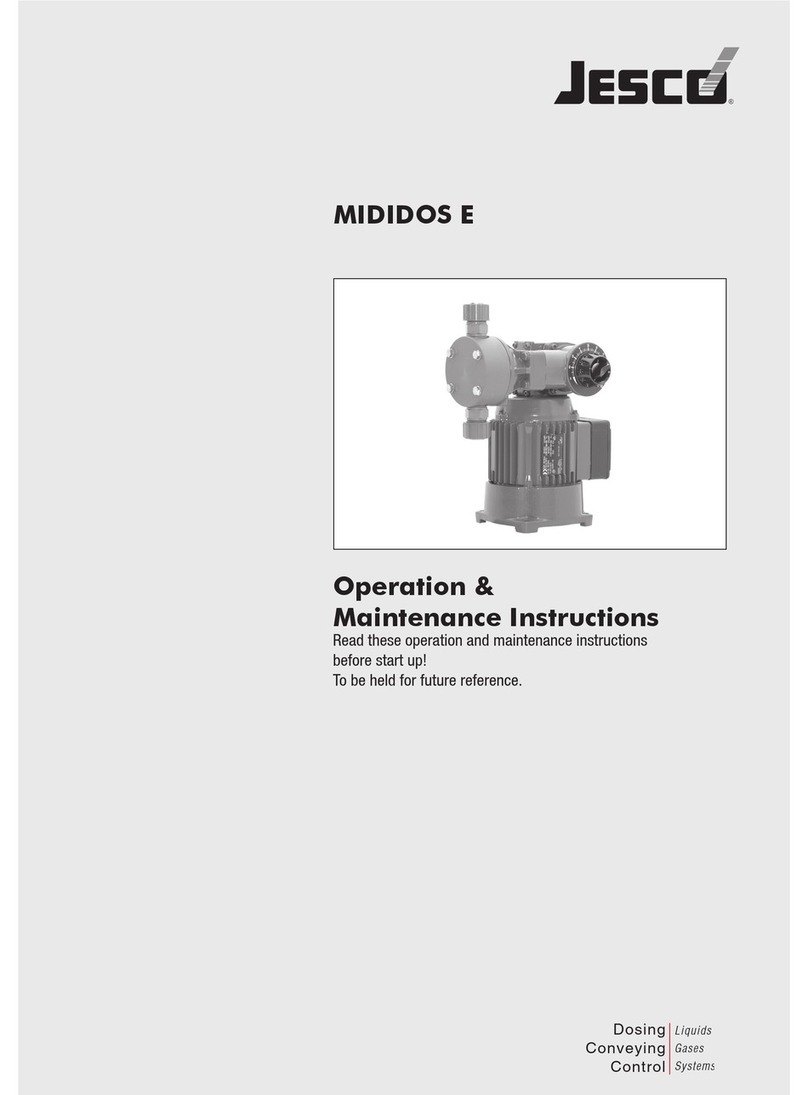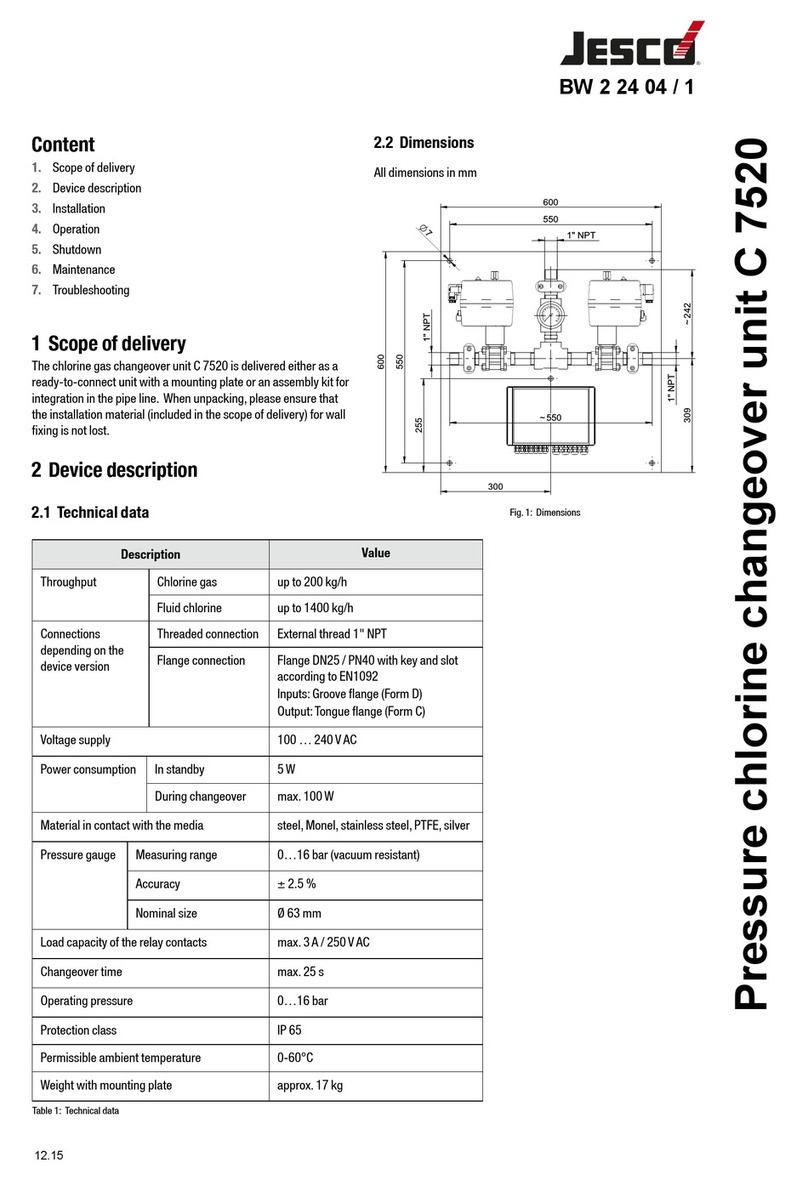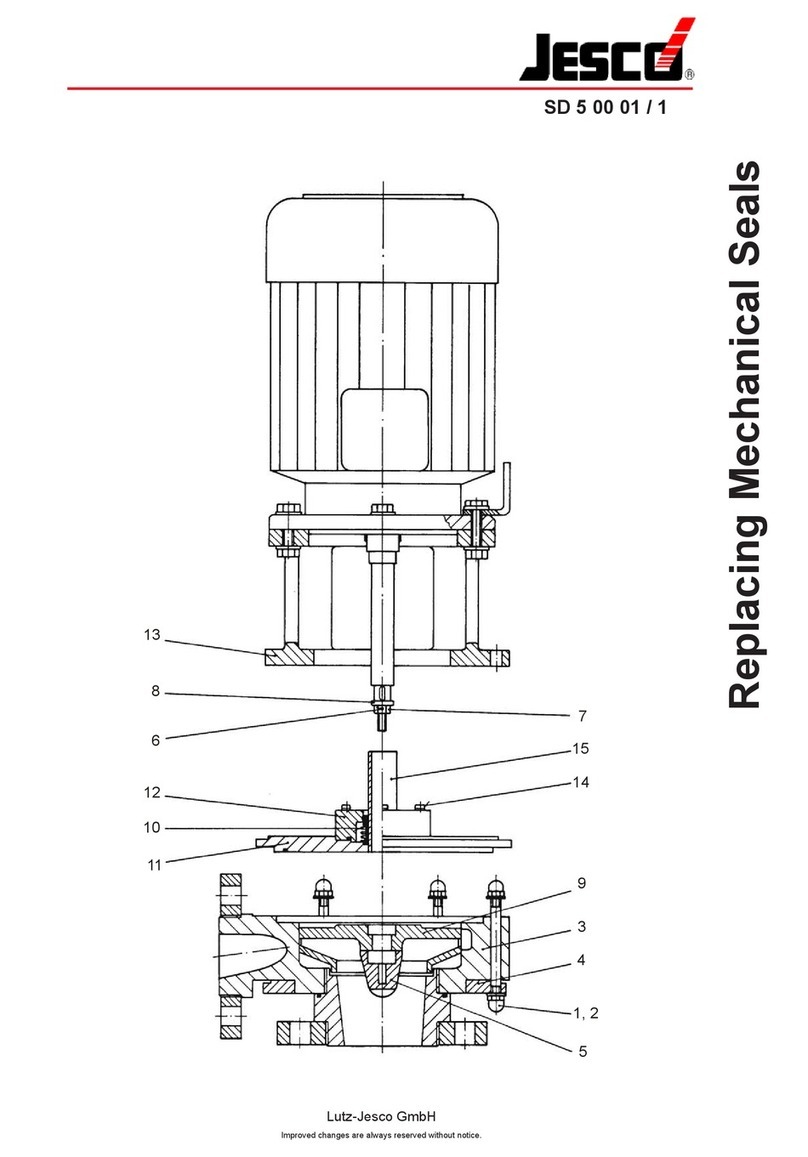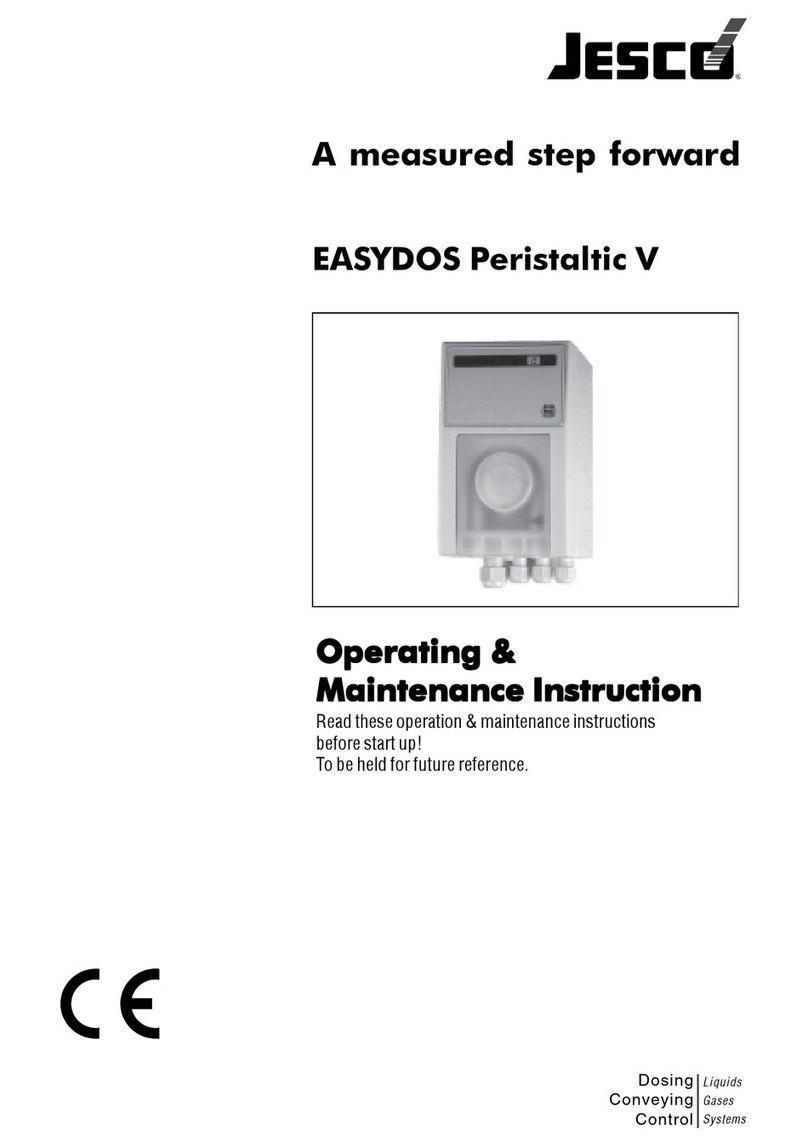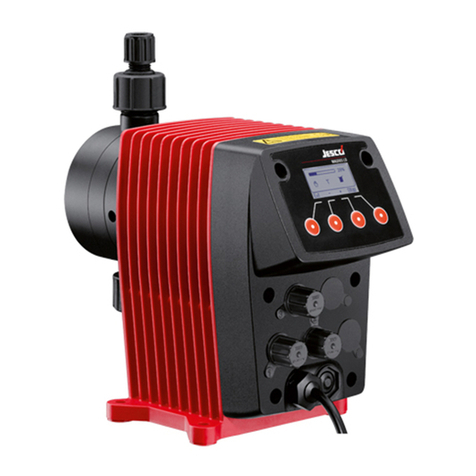
2 | Operation & Maintenance Instructions Peristaltic Pump | Content
Contents
1. Safety advice ....................................................................................................... 4
1.1 General.......................................................................................................... 4
1.2 Instruction symbols used in the operating manual ............................................ 4
1.3 Qualification and training of personnel ............................................................. 4
1.4 Important safety instructions ........................................................................... 5
1.5 Hazards due to non-compliance with safety instructions ................................... 5
1.6 Safe operation................................................................................................ 6
1.7 Safety instructions for the owner/operator........................................................ 6
1.8 Safety instructions for inspection-, maintenance- and installation work .............. 6
1.9 Unauthorised modifications and production of spare parts................................. 6
1.10 Impermissible modes of operation ................................................................. 6
1.11 Metering of chemicals .................................................................................. 6
1.12 Scope of delivery.......................................................................................... 7
2. Proper use............................................................................................................ 7
3. Function ............................................................................................................... 7
4. Technical Data ..................................................................................................... 8
5. List of chemical resistance ................................................................................. 9
6. Dimensional drawing......................................................................................... 10
7. Installation ......................................................................................................... 11
7.1 General information ...................................................................................... 11
7.2 Wall mounting .............................................................................................. 11
7.3 Mounting the control cabinet......................................................................... 12
7.4 Hydraulic Installation..................................................................................... 12
7.5 Electric connection of the pump .................................................................... 14
7.6 Installation example...................................................................................... 16
8. Start-up.............................................................................................................. 17
9. Shutdown ........................................................................................................... 18
10. Maintenance .................................................................................................... 18
10.1 Changing the hose ..................................................................................... 19
10.2 Changing the rotor...................................................................................... 20
11. Spare parts....................................................................................................... 21

